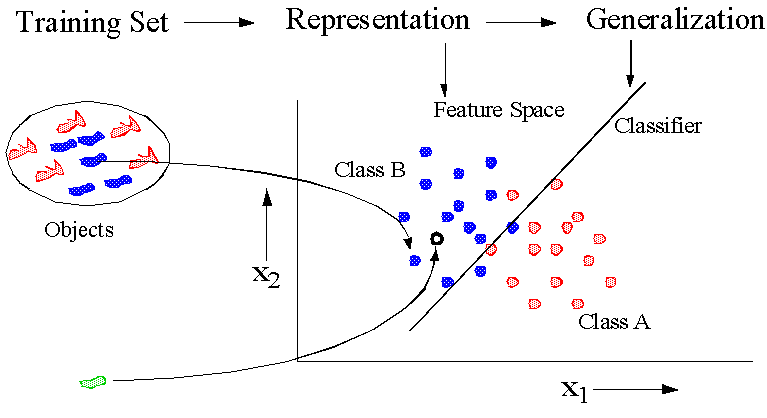Research topics
A typical human ability is the recognition of patterns in the world around us. It constitutes the basis of each natural science: the laws of physics, the description of species in biology, or the analysis of human behavior; they are all based on seeing patterns. Also in daily life pattern recognition plays an important role: reading texts, identifying people, retrieving objects, or finding the way in a city. Once patterns are established, learned from some examples or from a teacher, we are able to classify new objects or phenomena into a class of known patterns.
The study of automatic pattern recognition has two sides, one purely fundamentally scientific and one applied. By trying to build a system with pattern recognition capabilities more will become clear about the human ability to learn, recognize and classify. At the same time, systems are constructed that may be applied in various areas of science as well as in many places in society to assist human decision making.
In our research, both aspects are treated. There are two projects focusing on the foundations of pattern recognition: representation and generalization, in which new ways of describing objects and learning from examples are studied. In addition, there are several applied projects focusing on the recognition of spectra. Like images and time signals, spectra constitute a pattern domain with an unsolved problem: how to represent patterns in their entirety, when only a set of samples (pixels or bins) is available.
The research makes clear that automatic pattern recognition systems may successfully be applied in several places, but that an understanding of the human ability of recognizing patterns is still in its early days.
Generalization and Learning By an appropriate representation, e.g. using features or dissimilarities, real world objects can be mapped into a vector space. It is expected that classes of similar objects constitute localized groups (clouds or clusters) in such a space. There are various ways by which classifiers can be learned such that the class of an new object of an unknown origin is found (generalization):

- Discriminant analysis: finding directly an optimal classifier with respect to its estimated performance, using a training set of examples of two or more classes.
- Combining classifiers: combining a set of classifiers derived for different representations of the same objects, or based on different procedures for learning a single discriminant.
- One-class classifiers: in this case classifiers are learnt one-by-one on a single class bases. Herewith the classifiers protect the classes against objects of a new origin for which no examples were given in the training set.
- Active learning: this area studies the selection of the training set out of a larger set of objects with unknown class labels.